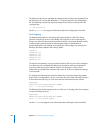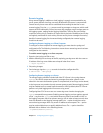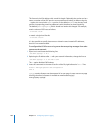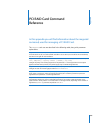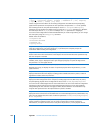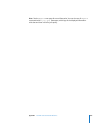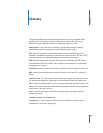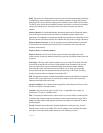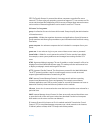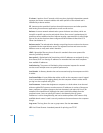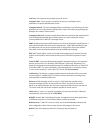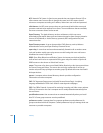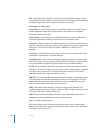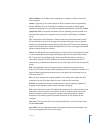
290 Glossary
DHCP Dynamic Host Configuration Protocol. A protocol used to dynamically distribute
IP addresses to client computers. Each time a client computer starts up, the protocol
looks for a DHCP server and then requests an IP address from the DHCP server it finds.
The DHCP server checks for an available IP address and sends it to the client computer
along with a lease period—the length of time the client computer may use the
address.
directory domain A specialized database that stores authoritative information about
users and network resources; the information is needed by system software and
applications. The database is optimized to handle many requests for information and to
find and retrieve information quickly. Also called a directory node or simply a directory.
directory domain hierarchy A way of organizing local and shared directory domains.
A hierarchy has an inverted tree structure, with a root domain at the top and local
domains at the bottom.
directory node See directory domain.
directory services Services that provide system software and applications with
uniform access to directory domains and other sources of information about users and
resources.
disk image A file that, when opened, creates an icon on a Mac OS desktop that looks
and acts like an actual disk or volume. Using NetBoot, client computers can start up
over the network from a server-based disk image that contains system software.
Disk image files have a filename extension of either .img or .dmg. The two image
formats are similar and are represented with the same icon in the Finder. The .dmg
format cannot be used on computers running Mac OS 9.
DNS Domain Name System. A distributed database that maps IP addresses to domain
names. A DNS server, also known as a name server, keeps a list of names and the IP
addresses associated with each name.
dynamic IP address An IP address that’s assigned for a limited period of time or until
the client computer no longer needs it.
everyone Any user who can log in to a file server: a registered user or guest, an
anonymous FTP user, or a website visitor.
filter A “screening” method used to control access to a server. A filter is made up of an
IP address and a subnet mask, and sometimes a port number and access type. The IP
address and the subnet mask together determine the range of IP addresses to which
the filter applies.
firewall Software that protects the network applications running on your server. IP
firewall service, which is part of Mac OS X Server software, scans incoming IP packets
and rejects or accepts these packets based on a set of filters you create.



